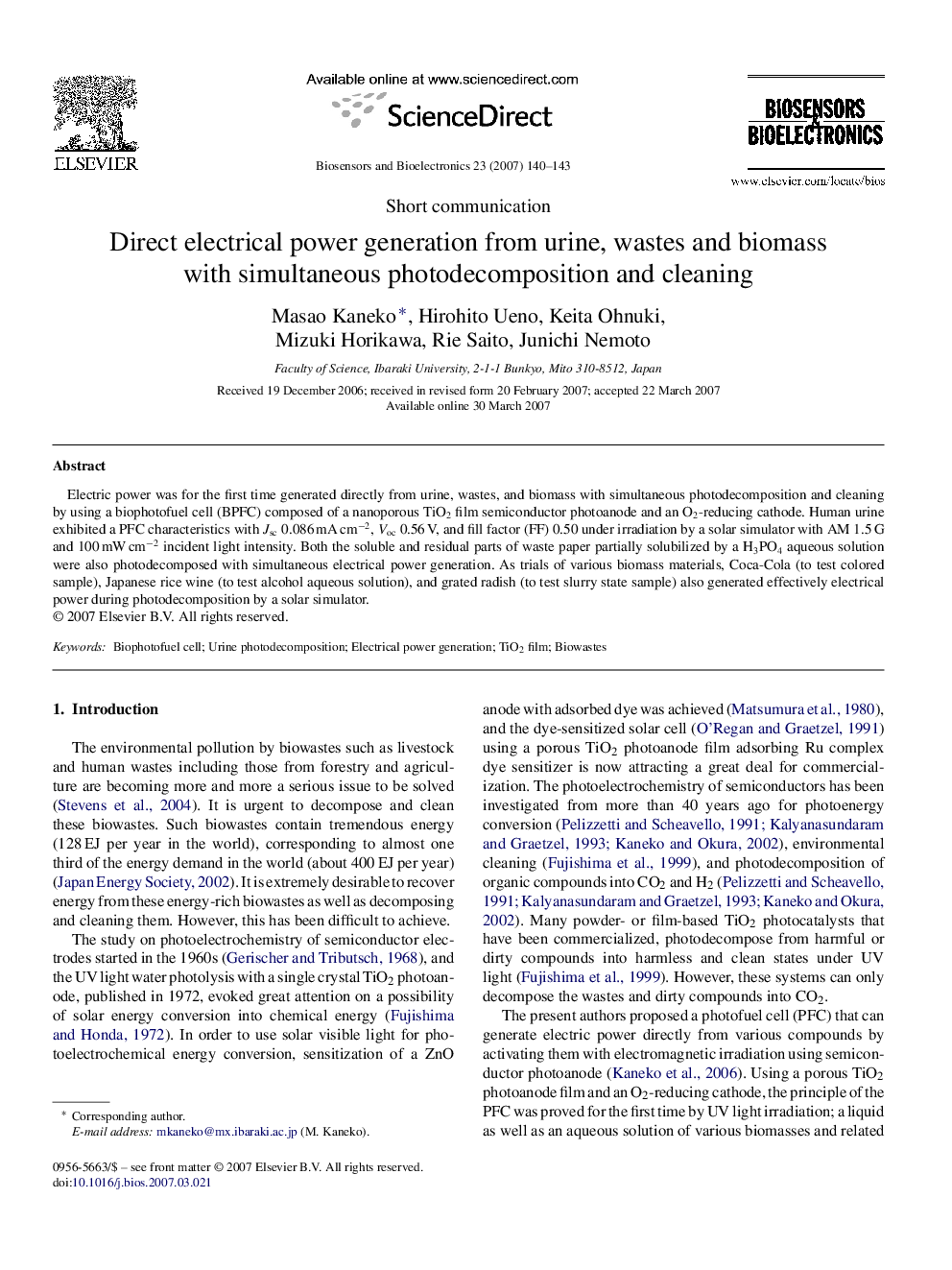| کد مقاله | کد نشریه | سال انتشار | مقاله انگلیسی | نسخه تمام متن |
|---|---|---|---|---|
| 870184 | 909854 | 2007 | 4 صفحه PDF | دانلود رایگان |

Electric power was for the first time generated directly from urine, wastes, and biomass with simultaneous photodecomposition and cleaning by using a biophotofuel cell (BPFC) composed of a nanoporous TiO2 film semiconductor photoanode and an O2-reducing cathode. Human urine exhibited a PFC characteristics with Jsc 0.086 mA cm−2, Voc 0.56 V, and fill factor (FF) 0.50 under irradiation by a solar simulator with AM 1.5 G and 100 mW cm−2 incident light intensity. Both the soluble and residual parts of waste paper partially solubilized by a H3PO4 aqueous solution were also photodecomposed with simultaneous electrical power generation. As trials of various biomass materials, Coca-Cola (to test colored sample), Japanese rice wine (to test alcohol aqueous solution), and grated radish (to test slurry state sample) also generated effectively electrical power during photodecomposition by a solar simulator.
Journal: Biosensors and Bioelectronics - Volume 23, Issue 1, 30 August 2007, Pages 140–143